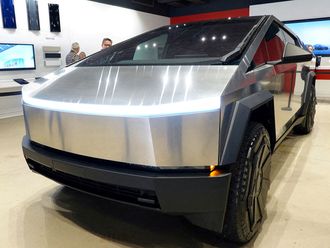Back in 2012, communications company Ericsson famously noted that the next big thing is a trillion small things. And if the recent international Consumer Electronics Show in Las Vegas was any indication, we are already in the midst of the internet of things (IoT), where everything from your fridge to the washing machine has become smart enough to talk to each other while transmitting data to the cloud.
However, where there is data, there is a possibility for hackers as well. Will smart home appliances and connected devices be the next big threat to your online privacy and security? Chester Wisniewski, Senior Security Consultant, Sophos, says rather than a threat, they will be the next big nuisance.
In his opinion, remote hijacking and repurposing of devices will be a bigger problem than data leaks. “Almost all these devices are not secure and will likely be commandeered for attacking online businesses,” says Wisniewski. “Disguising the identities of attackers further complicates the task of stopping the attacks.”
Prioritising devices
Incidentally, in January last year, security firm Proofpoint revealed details about the first ever cyber attack involving smart home appliances such as televisions, fridges, smoke detectors and thermostats. Hackers sent more than 750,000 malicious emails in just two weeks — Proofpoint claims laptops and tablets were also hijacked, but at least 25 per cent of the attacks were on non-traditional appliances that are connected to the internet.
Technology analyst Glenn Fleishman calls it the internet of treacherous things. In an MIT Technology Review article, he draws parallels to the recently uncovered Lizard Stress network of compromised home routers that can be remotely deployed to take down websites. This discovery highlights the importance of prioritising smart appliance security, since they use many of the same networking features found in routers.
Kei Taniguchi, Director, Consumer Marketing Division, Panasonic Marketing Middle East and Africa, says a proliferation of smart appliances is triggering a revitalisation in thinking about security. “This changing and evolving digitised world is introducing digitised risks that are both unprecedented and revolutionary in nature,” says Taniguchi.
What you can do
Wisniewski explains that the easiest way to avoid any problems is by simply not buying smart appliances. However, Taniguchi feels that in the future, getting hold of a dumb appliance may not even be an option. “Just as it is becoming more difficult to find a TV that does not have connected capabilities, there may come a time when home appliances, security systems and other such features are smart by default. It is important for consumers to be able to identify and understand the security considerations before going digital,” says Taniguchi.
Wisniewski proposes a few simple steps. “If you want this technology in your home, consider whether you can use it without access the internet,” he says. Ask the vendor for how long they commit to updating the device’s security features and inquire as to how you can receive these updates.”
The future safe?
Jeong Wook Oh, Senior Security Researcher at HP, wrote a paper late last year titled Smart Home Appliance Security and Malware. His research found that the only reason we are not seeing more attacks is because the current expected return on investment for malware writers is not enticing enough.
Oh highlighted that the market for smart appliances isn’t even remotely close to saturation at this point, so the potential number of targets, and therefore incentives to compromise remains relatively low.
But that will change as smart appliances go mainstream. He added that this gives us a good chance to think about the security of these devices and get ahead of the game.
Meanwhile, Taniguchi is confident the technological advancements that have created this new digitised world will also pave the way for ensuring the safety and privacy of the data of its consumers. “Organisations today are already approaching the problem of data protection with many solutions, thus ensuring the weak links are minimised,” he adds. While consumers are getting better connected and more powerful in the marketplace, they are also changing the behaviour of manufacturers and service providers, as well as altering the dynamics of markets.
Taniguchi points out, “I am sure we all will agree that every convenience comes at
a price.” ■
Safety first, laundry second
Will smart home appliances and connected devices be the next big threat to your online privacy and security?













